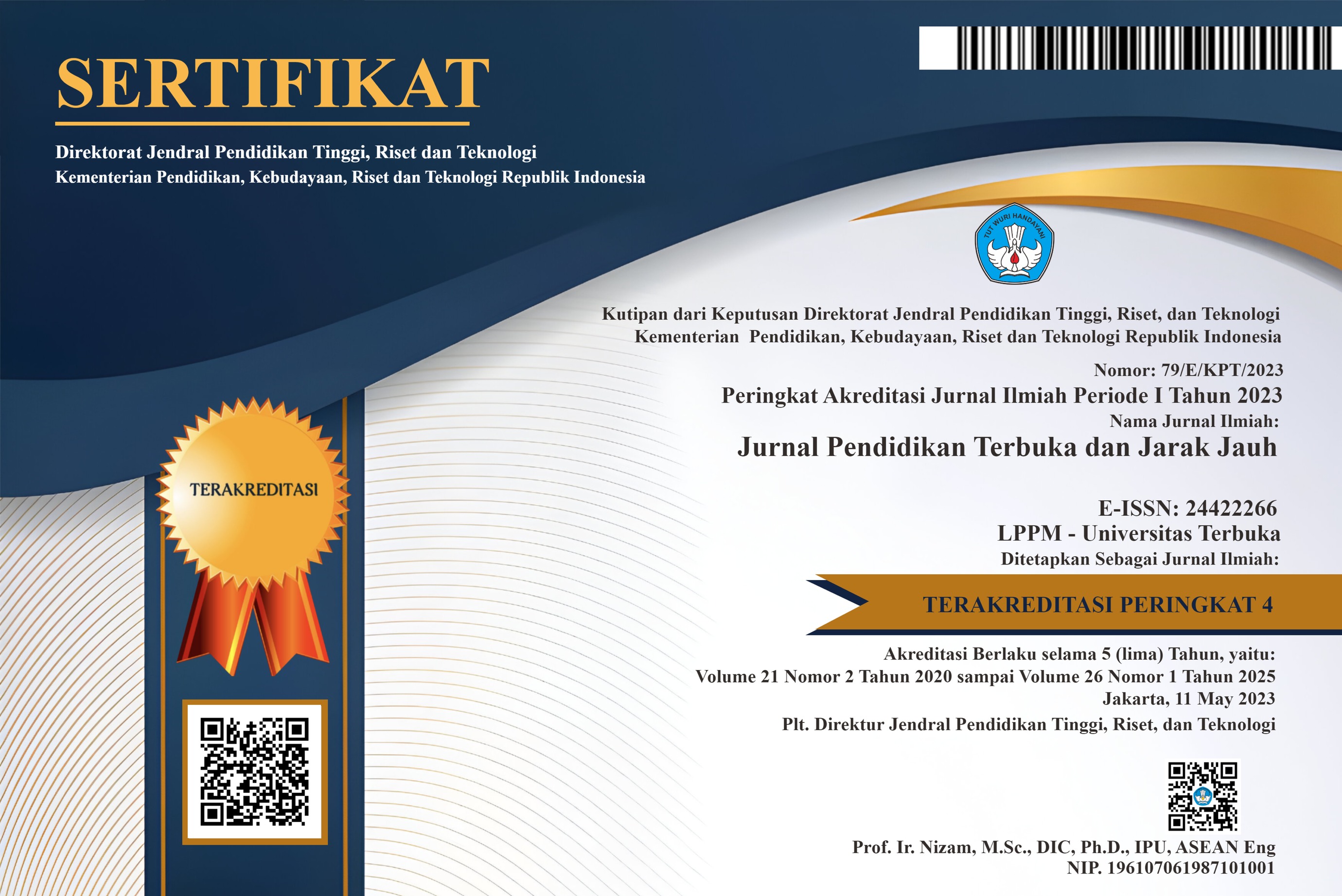PENCAPAIAN KOMPETENSI MATA KULIAH PRAKTIKUM TAKSONOMI TUMBUHAN TINGGI MELALUI KOMBINASI DRY LAB DAN WET LAB
Keywords:
Competence, drylab, dry lab, kombinasi, kompetensi, practicum, praktikum, taksonomi tumbuhan tinggi, vascular plant taxonomy, wet lab, wetlabAbstract
Seiring dengan perkembangan teknologi informasi saat ini, pencapaian kompetensi mata kuliah praktikum dapat diperoleh melalui kombinasi antara Dry Lab dengan Wet Lab. Di sisi lain, lokasi mahasiswa PS Biologi sangat tersebar dan biaya praktikum cukup tinggi. Hal ini dapat diatasi antara lain bila pelaksanaan praktikum dapat dilakukan secara mandiri sehingga mahasiswa tidak harus hadir di tempat praktikum. Namun demikian, tidak semua kompetensi praktikum dapat dilakukan secara mandiri, sehingga perlu kombinasi pelaksanaan praktikum. Tulisan ini menyajikan tentang penerapan praktikum Dry Lab dikombinasikan dengan Wet Lab untuk pencapaian kompetensi mata kuliah praktikum taksonomi tumbuhan tinggi. Kompetensi yang ditargetkan dalam mata kuliah praktikum taksonomi tumbuhan tinggi adalah mampu membandingkan karakteristik antara kelompok tumbuhan berpembuluh dengan beberapa contoh suku dan jenis anggotanya. Hasil kajian terhadap materi mata kuliah praktikum tersebut menunjukkan bahwa kompetensi yang diinginkan dapat dicapai dengan memanfaatkan kombinasi Dry Lab dan Wet Lab. Dry Lab digunakan untuk memperkuat pengetahuan awal terhadap tumbuhan yang akan diamati dan untuk memperagakan langkah-langkah pelaksanaan praktikum di lapangan secara mandiri. Selain itu, Dry Lab memudahkan untuk pengklasifikasian tumbuhan. Sedangkan Wet Lab dimanfaatkan untuk kegiatan praktikum pengamatan organ tumbuhan yang membutuhkan peralatan khusus, perabaan, dan penciuman. Pelaksanaan praktikum kombinasi antara Dry Lab dan Wet Lab dapat mengurangi kunjungan mahasiswa ke tempat praktikum, sehingga biaya praktikum juga dapat dikurangi.
Along with the recent development of information technology, achieving competency practicum courses may be obtained through a combination of dry lab and wet lab. On the other hand, the locations of Universitas Terbuka biology students are very scattered and relatively high cost of lab work. This can be handled when the implementation of practical work can be done independently so that students do not have to be present in the lab. However, not all practicum competence can be done independently, so it needs a combination of practical implementations. This paper presents the practical application of dry lab combined with wet lab to achieve Vascular Plant Taxonomy Practicum Course competency. Competencies targeted in the Vascular Plant Taxonomy Practicum Course are to be able to compare characteristics between groups of vascular plants with a few examples of families and members type. The study of practicum subjects indicate that the competency requirements can be achieved by utilizing a combination dry lab and wet lab. Dry lab used to strengthen prior knowledge about the plants that will be observed and to demonstrate the steps of practicum implementation in the field independently. In addition, dry lab made easier to classify the plants. While wet lab can be used for practical observation activities on plant organs which require special equipment, as well as touching and smelling activities. The implementation of combination on dry lab and wet lab practicum can reduce students’ visit to the laboratory, so that the cost of practical work can also be reduced.
References
Budiastra A.A.K. & Purwoningsih. (2004). Dry labs and wet labs. distance higher education. Jakarta: Universitas Terbuka Publisher.
Cahyono. (2007). Overview of implementation activities in learning biology laboratory SMA N Padang. Padang.
Chikmawati, T., Ariyanti, N.S., & Djuita, N.R. (2010). Vascular plant taxonomy practicum course. Jakarta: Universitas Terbuka Publisher.
Darma Putra, I. K. G. (2009). Education based on information technology. Faculty of Engineering, University of Udayana.
Grover, F. & Wallace, P. (1979). Laboratory organization and management. London: Butterworths.
The virtual lab of instrumental methods of chemical analysis theory and exercise. Diambil 22 April 2010, dari: http://www.ntua.gr/virtlab/virtlab_eng.
Husen, S. A. (2007). Using visual methods to improve student understanding in the animal development structure II practicum. Faculty of Mathematics and Natural Science. Unair: Surabaya.
Irawan, B. (2007). Using visual methods to improve student understanding of the general biology. Faculty of Mathematics and Natural Science. Unair: Surabaya.
Menteri Pendidikan Nasional. (2002). Decree of the minister of national education of the Republic IndonesiaI No. 045/U/2002 about the core curriculum of higher education. Minister of National Education, Jakarta.
Polla.G. (2000). Buletin pelangi pendidikan. Jakarta: Universitas Negeri Jakarta Publisher (UNJ).
Resmiyanto, R. (2009). Study of virtual laboratory based on kuhnian science models and its implications in learning physics. Faculty of Mathematics and Natural Science - State University Malang, Malang.





